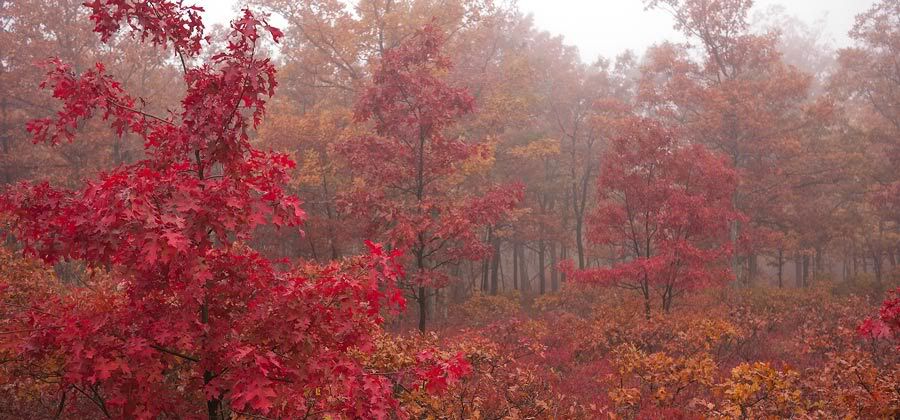
Red and Orange (Panasonic GH1, Lumix 20mm f 1.7)
On a day off, especially if I am awakening in the morning during a photogenic season, or in a scenic place, I have to make a decision.
Do I get up, grab my photo gear and go out early, or do I “sleep in”. This is a decision that I usually make based on the weather.
If it’s cloudy, I stay in bed, knowing that the same shooting conditions that I would encounter at 6 AM will exist at 11. I can sleep a bit, have breakfast and coffee, and still get good light.
If it’s clear, I think about it. You have to get up very early, arguably before sunrise, to catch the very best light. If I can look out the window and can already see that it’s clear, I probably already missed the best shooting. Have to wait until sunset.
If it’s foggy however, particularly if there’s no rain, I’m up instantly. For fogs, or mists, in many ways and in their many forms provide a wonderful backdrop for landscape photography.

Sunrise and Corn ( Fuji S3, Tamron 17-50 f2.8)
Landscape photographers need to try to understand the weather. It’s helpful to anticipate the atmosphere’s behavior in order to be present for the best shooting conditions. I’m not a meteorologist, but I know a few things:
I know that in the fall of the year, when a cold front passes after a period of warmth, fog will form in valleys, particularly in river valleys, while the surrounding ridges will be clear. The amount of fog will depend on the “dew point” of the atmosphere.
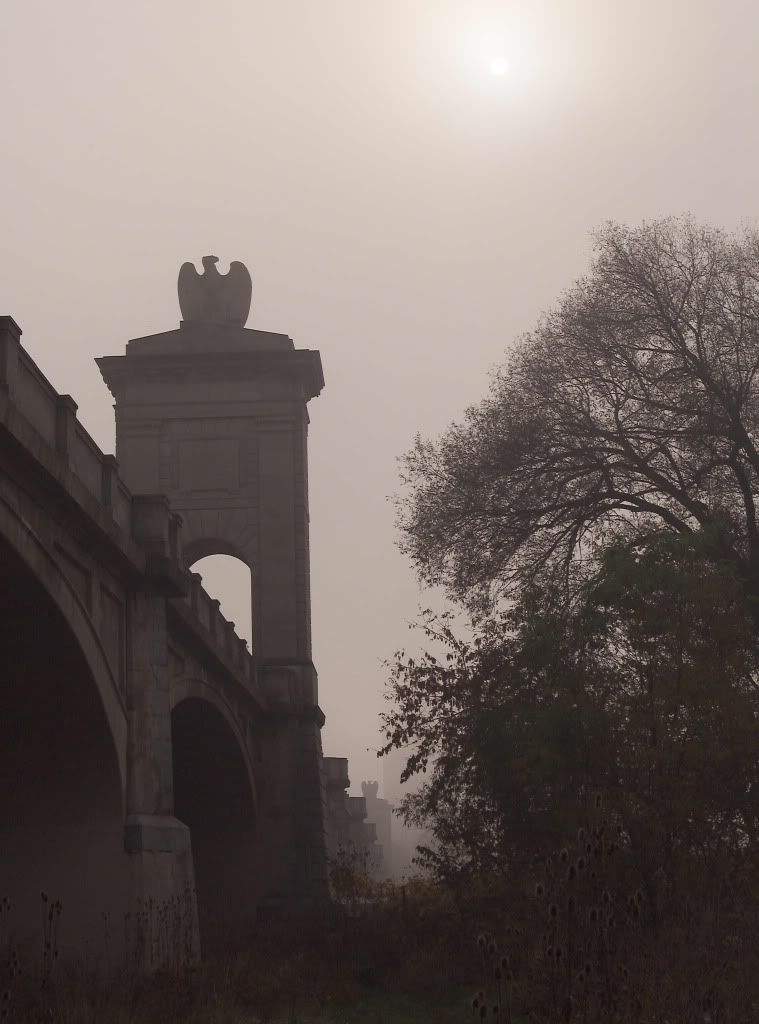
Market Street Bridge, Fall Morning (Fuji S2, Nikkor 18-35mm f3.5)
I know that a similar phenomenon occurs anytime cool moist air passes over warmer surfaces.
I know that it is not unlikely to have fog, when there is an ice storm in the winter.
I know that fog will occur at times I cannot predict.
Fog is like free bokeh (see definition here) provided by the atmosphere. When it is thin, it blurs and deemphasizes the background detail, focusing one’s attention on the subject.

Betty the Sheep (Fuji S3, Nikkor 18-35mm)
When it is thick, it can transform the commonplace into the abstract. It can change a pedestrian scene, into a more magical vision.
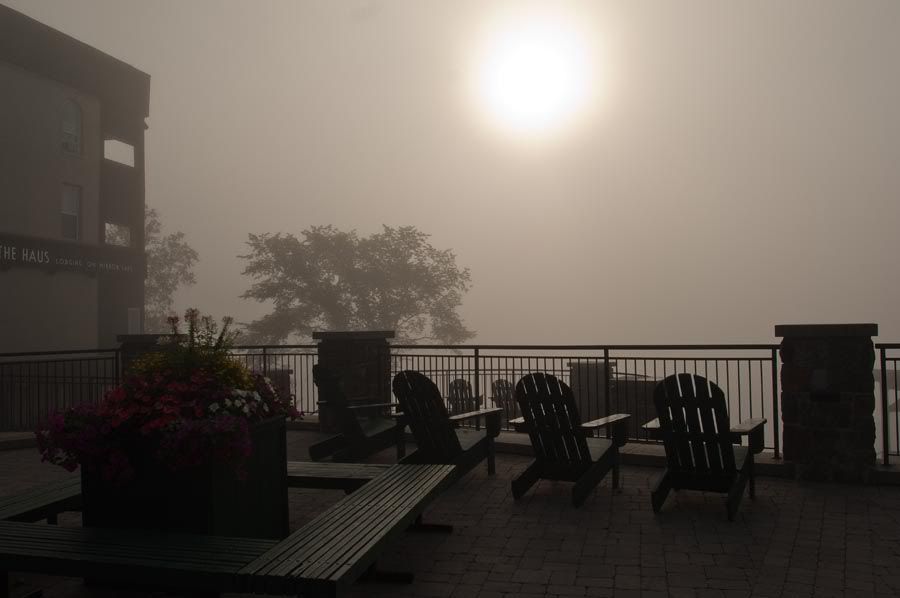
Lake Placid, Foggy Morning (Nikon D2x, Nikkor 17-35mm f 2.8)
It helps to have equipment that is relatively moisture resistant. Don’t underestimate the pernicious effect of water vapor on electronics. Don’t bring warm cameras out into cool moist environments. If you do, water will condense onto the electronics, and lenses will fog. At the least, it helps to have a lens cloth available.
Better yet, let the equipment equalize to the ambient temperature (I usually leave my gear overnight in a place where that can happen). Typically then, there will be few issues.
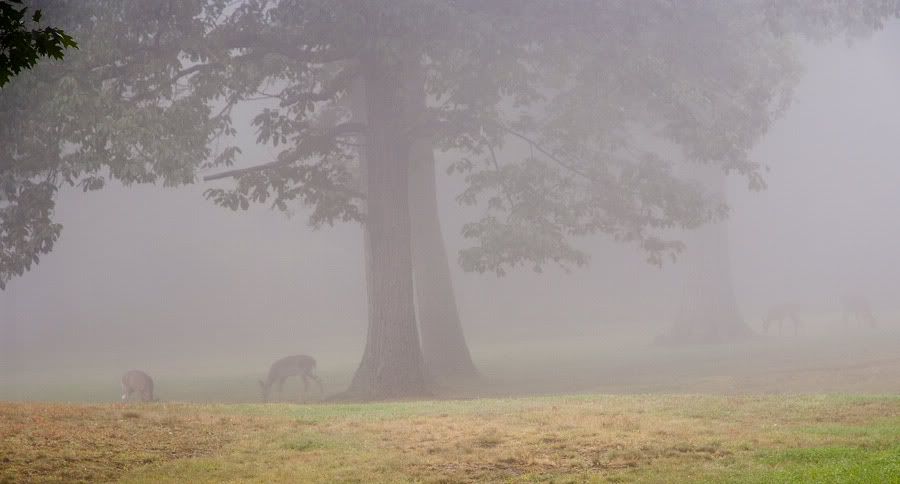
Deer in Fog (Panasonic G1, Lumix 14-45mm)
Every once in a while, Mother Nature helps us with our craft.
Take advantage of it.
October 18, 2010
Alright , I admit it. I screwed up A number of our readers pointed out that the real danger of condensation on camera lenses, and in camera bodies occurs when cold equipment is brought into warm environments. Bang, you got me. In my own defense however, I would say that I was trying to warn my gentle readers about the perils of using electronic equipment, in ultra-humid environments.
I am greatful that people are paying attention.
I hope you’ll continue.

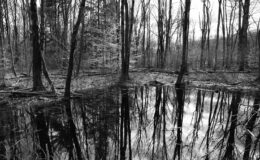
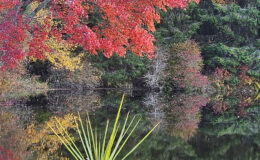


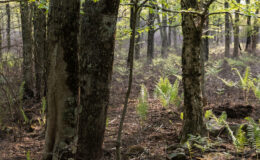
ppaul2005
October 17, 2010 3:47 pmWonderful pictures. I really enjoyed them. Congratulations
Mike Mullen
October 17, 2010 10:10 pmYou mention the danger of bringing a warm camera into a cool, moist environment. I have only encountered problems bringing cool cameras into warmer, humid environments. A meteorologist will tell you that dew (condensation) happens as air is cooled (not warmed) so a warm camera should be preferable.
henrysmithscottage
October 17, 2010 10:23 pmSeveral People have commented on this and I think the critique is correct.
Mike Mullen
October 18, 2010 1:16 pmI’m wondering why it says my previous comment is still waiting moderation?
Just curious since you had already replied to my comment about condensation.
Michael Perham
October 21, 2010 3:41 pmYou make no referrence to any special technique required to shooting in fog. For instance, do you use exposure compensation …any guide as to how much?
Thanks, Mike.
henrysmithscottage
October 21, 2010 7:01 pmI shoot in Raw and expose the image using the histogram. I have no specific technique for fog because the situations are often very different.